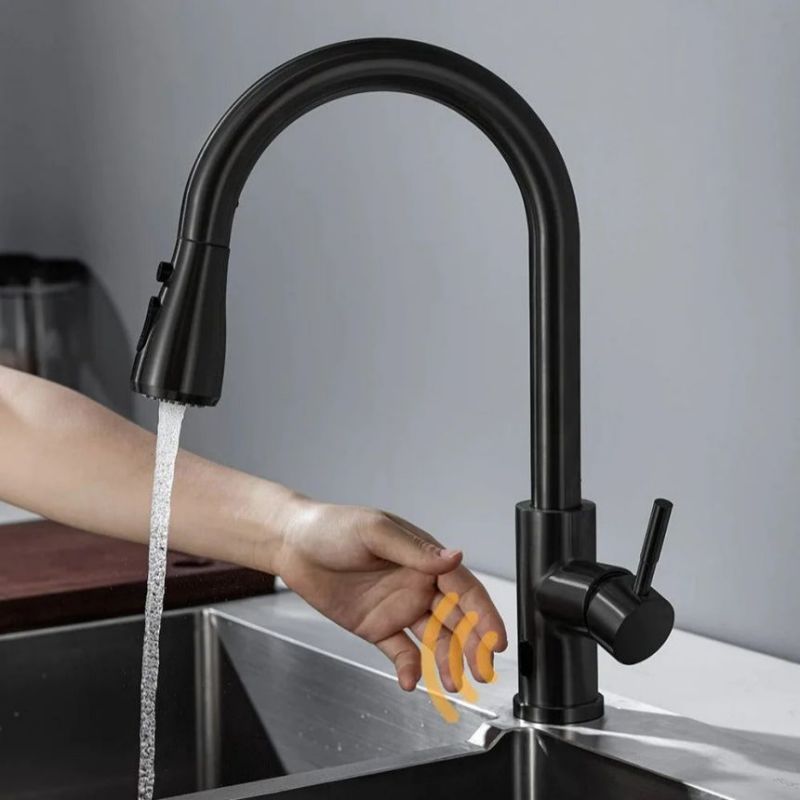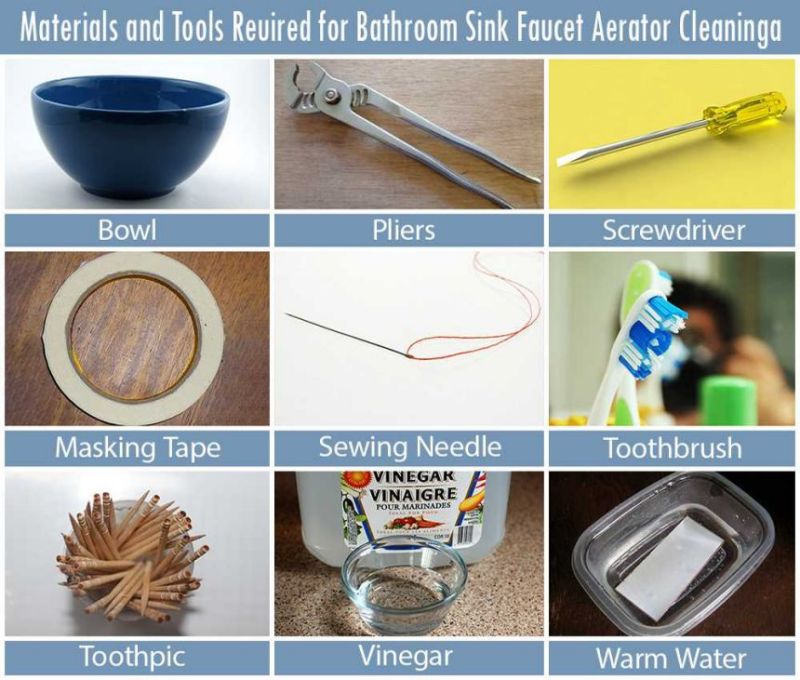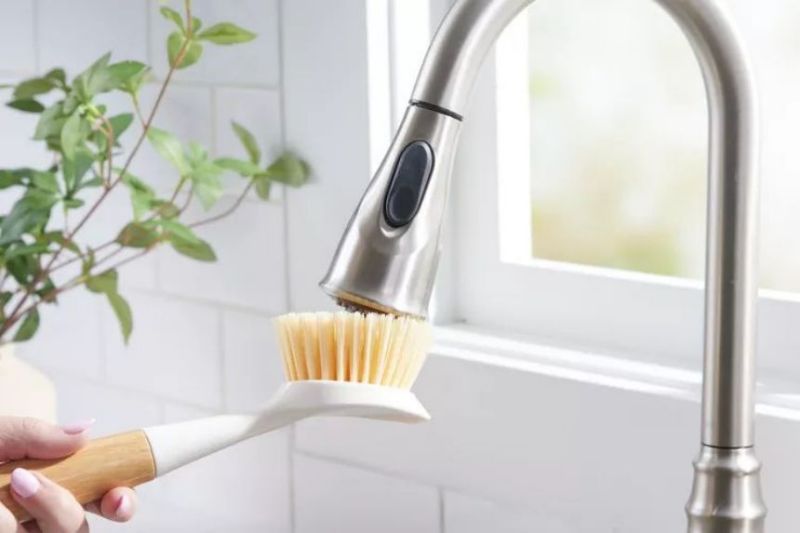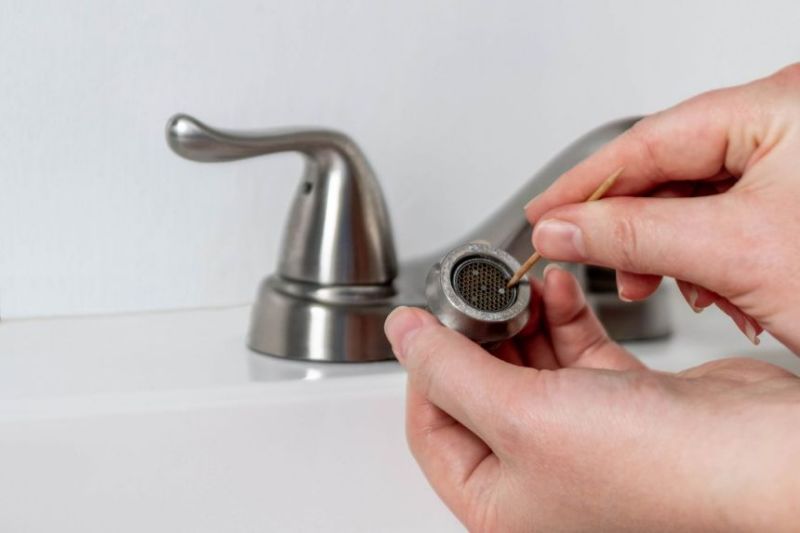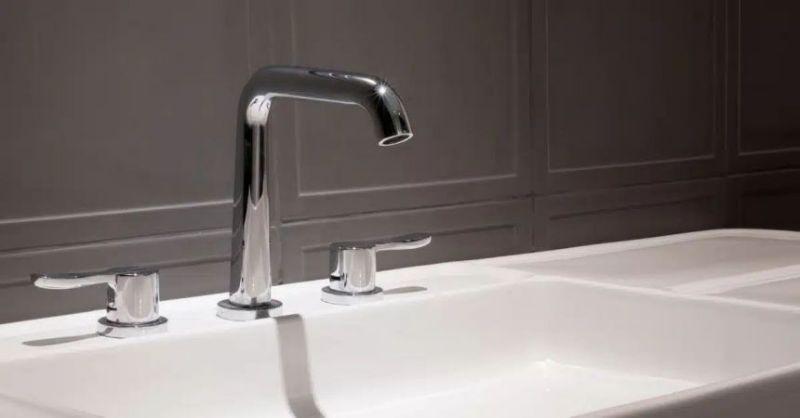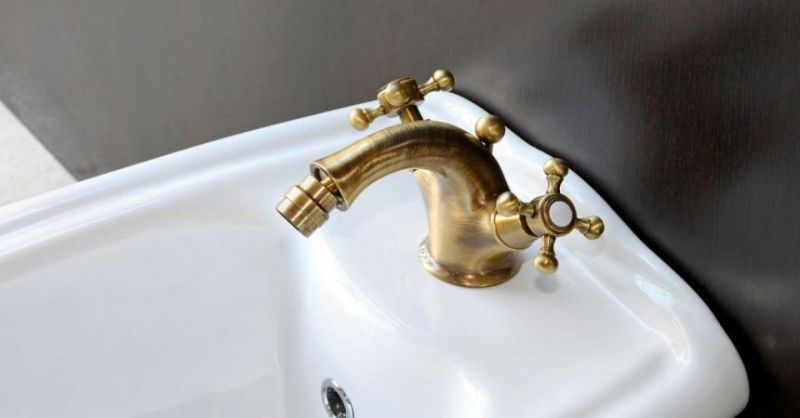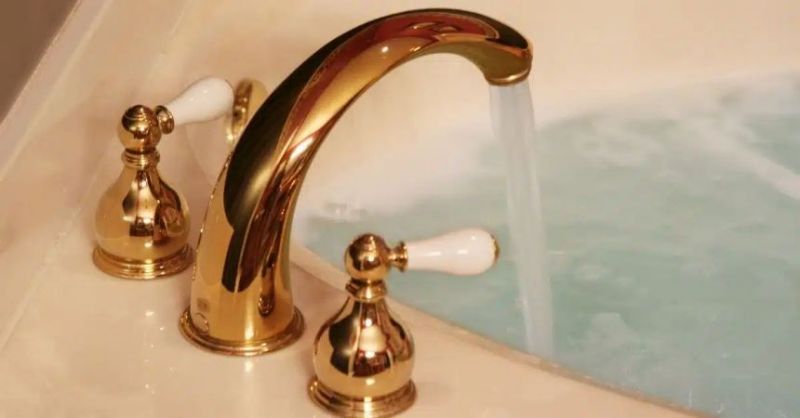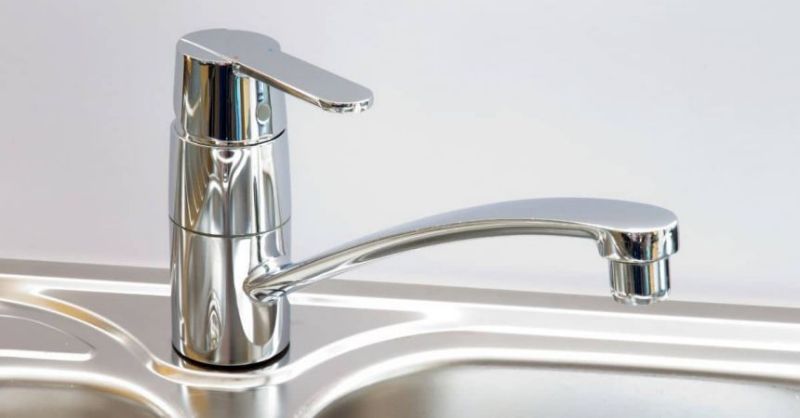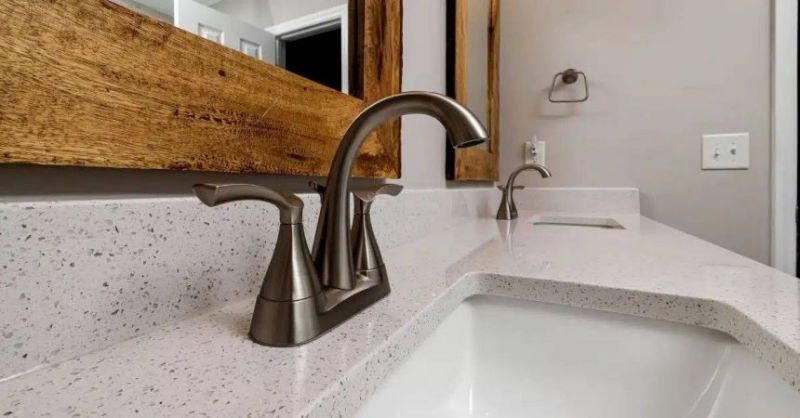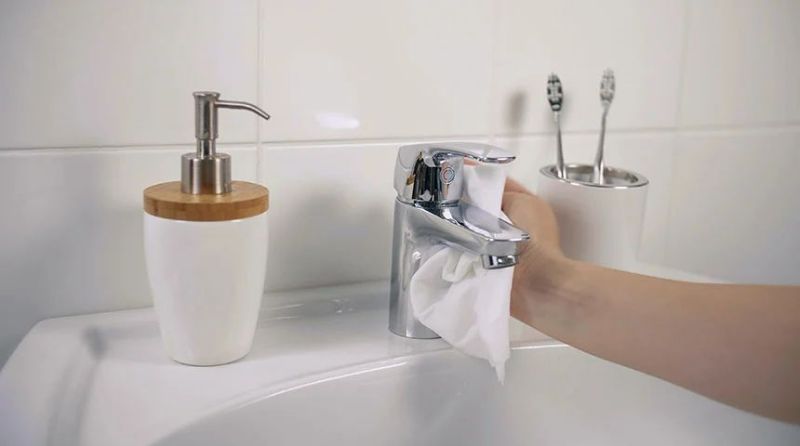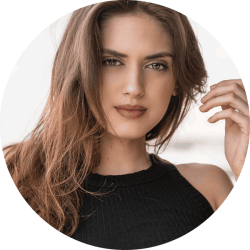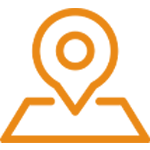 English
English
Jabra Sanitary is a sanitaryware supplier offering toilets, sinks, faucets, bathtubs, etc., at competitive prices. If you're a distributor, wholesaler, or project contractor, get a quote today!
 $23.9 Limited-time Offer
$23.9 Limited-time Offer Consignment Policy
Consignment Policy 20 Years of Experience
20 Years of Experience
Faucets are among the most frequently used fixtures in any home, making them prone to buildup and grime. Regular cleaning is crucial to maintain their functionality and appearance.
Not only does cleaning a faucet extend the faucet's lifespan, but it also ensures a hygienic environment in the kitchen and bathroom. This guide will walk you through various methods and techniques to clean different faucet finishes effectively.
Table of Contents
How to Clean a Faucet: What to Do and What to Avoid
Tools and Materials for Cleaning a Faucet
How to Clean Brass Faucets
How to Clean a Faucet Aerator
How to Clean a Chrome Faucet
How to Clean Brass Faucets
How to Clean Polished Nickel Faucets
How to Clean Bronze Faucets
How to Clean Stainless Steel Faucets
How to Clean Brushed Nickel Faucets
Cleaning Faucets with Vinegar
Additional Tips for Faucet Cleaning
FAQs
Wrapping Up
How to Clean a Faucet: What to Do and What to Avoid
Proper cleaning of a faucet ensures it remains shiny and functional for longer. Regular faucet cleaning with the right methods can prevent damage and keep it looking like new. <Learn how to install a new faucet>
What to Do
- Use gentle cleaning agents like soap, vinegar, or baking soda.
- Clean regularly to prevent mineral buildup and stains.
- Use soft cloths or brushes to avoid scratching the finish during faucet cleaning.
- Disassemble components like the aerator for thorough cleaning.
What to Avoid
- Avoid using abrasive cleaners or pads that can scratch the surface.
- Do not use harsh chemicals like bleach or ammonia on sensitive finishes.
- Avoid leaving water spots, as they can lead to mineral deposits over time.
- Do not forcefully scrub delicate finishes like brass or polished nickel.
Tools and Materials for Cleaning a Faucet
Having the right tools and materials can make the faucet cleaning process easier and more effective. Here's what you'll need:
- Soap: Mild dish soap is perfect for routine cleaning.
- Vinegar: A natural cleaner effective against mineral buildup. Clean faucet vinegar is especially effective for tough stains.
- Baking Soda: Great for removing stubborn stains and grime.
- Limescale Remover: Essential for tackling hard water deposits.
- Aerator Brush: Helps in cleaning small parts of the faucet like the aerator.
- Steam Cleaner: Useful for deep cleaning without harsh chemicals.
How to Clean Faucet Head: Step-by-Step Guide
The faucet head can accumulate mineral deposits and grime over time, affecting water flow and quality. Here's how to clean the faucet head effectively:
- Remove the Faucet Head: Unscrew the faucet head by turning it counterclockwise. Use a cloth to protect the finish if it's tight.
- Soak in Vinegar: Place the faucet head in a bowl filled with white vinegar. Let it soak for 15-30 minutes to dissolve mineral deposits.
- Scrub and Rinse: Use a soft brush to scrub away any remaining buildup. Rinse thoroughly with warm water.
- Reattach the Faucet Head: Screw the faucet head back onto the faucet, ensuring it's securely in place.
Tip: For stubborn buildup, use a mixture of vinegar and baking soda to scrub the faucet head before rinsing.
How to Clean a Faucet Aerator
The aerator, located at the tip of the faucet, can become clogged with debris and mineral deposits. Cleaning the aerator is essential for maintaining water flow and proper faucet cleaning:
- Remove the Aerator: Use pliers or an aerator removal tool to gently unscrew the aerator. Be careful not to damage the threads.
- Disassemble and Soak: Take apart the aerator components and soak them in vinegar for 30 minutes to loosen deposits.
- Brush and Rinse: Use a small brush to clean each part, then rinse with water.
- Reassemble and Reattach: Put the aerator back together and screw it onto the faucet.
How to Clean a Chrome Faucet
Chrome faucets are popular for their sleek and shiny appearance, but they can show water spots and fingerprints easily. Here's how to clean a chrome faucet without damaging it:
- Wipe with Soapy Water: Use a soft cloth dipped in warm, soapy water to gently wipe down the faucet. Avoid using abrasive sponges that can scratch the chrome.
- Rinse and Dry: Rinse the faucet with clean water to remove soap residue, then dry it immediately with a microfiber cloth to prevent water spots.
- Polish for Shine: For extra shine, apply a small amount of baby oil or car wax to a cloth and buff the faucet surface.
Tip: Regularly wiping down the faucet with a dry cloth after use can help maintain its shine and prevent water spots.
How to Clean Brass Faucets
Brass faucets add a touch of elegance and vintage charm to any bathroom or kitchen. However, they require special care to maintain their luster and prevent tarnish. Here's how do you clean brass faucets properly:
- Use a Gentle Cleaner: Mix a solution of mild dish soap and warm water. Dampen a soft cloth in the mixture and gently wipe the faucet.
- Rinse Thoroughly: Use a clean, damp cloth to rinse off any soapy residue. Make sure to remove all soap, as it can cause dullness if left on the brass.
- Dry and Buff: Immediately dry the faucet with a microfiber cloth to prevent water spots. Buff the surface to restore shine.
- Polish (Optional): For extra shine, apply a brass polish sparingly with a soft cloth, following the faucet manufacturer like Jabra Sanitary's instructions.
Tip: Avoid using abrasive cleaners or pads on brass faucets, as they can easily scratch the surface and damage the finish.
How to Clean Polished Nickel Faucets
Polished nickel faucets are known for their warm, glossy finish. They require careful cleaning to maintain their polished appearance. Here's how to clean polished nickel faucet without damaging its surface:
- Wipe with Soapy Water: Mix mild dish soap with warm water and use a soft cloth to gently clean the faucet.
- Rinse and Dry: Rinse off the soapy residue with clean water and immediately dry with a soft cloth to prevent water spots.
- Avoid Harsh Cleaners: Refrain from using abrasive or acidic cleaners, as they can damage the polished nickel finish.
- Polish: To enhance the shine, use a non-abrasive metal polish specifically designed for nickel finishes. Apply it with a soft cloth and buff to a shine.
Tip: Regularly dusting the faucet with a dry, soft cloth can help maintain its polished look.
How to Clean Bronze Faucets
Bronze faucets often have a unique, antique look and can develop a natural patina over time. Proper cleaning will keep them looking their best. Here's how to clean bronze faucets effectively:
- Use a Mild Soap Solution: Mix a small amount of mild dish soap with warm water. Gently wipe the faucet with a soft cloth dampened in the solution.
- Rinse Carefully: Rinse with clean water and dry immediately with a soft cloth to avoid water spots.
- Avoid Abrasive Cleaners: Do not use abrasive or acidic cleaners, as they can strip the protective coating and damage the bronze.
- Polish with Wax: To maintain the faucet's finish, apply a thin layer of furniture wax or a wax polish designed for bronze. Buff gently with a soft cloth.
Tip: Allow the patina to develop naturally if you prefer the aged look of bronze. Avoid polishing if you want to keep the antique appearance.
How to Clean Stainless Steel Faucets
Stainless steel faucets are durable and resistant to rust and stains, but they can still accumulate fingerprints and water spots. Here's how to clean stainless steel faucet and keep it looking pristine:
- Wipe with Soapy Water: Mix a few drops of mild dish soap with warm water. Use a soft cloth to gently wipe down the faucet.
- Rinse and Dry: Rinse the faucet with clean water and dry it immediately with a microfiber cloth to prevent water spots.
- Polish with Olive Oil: To add shine, put a small amount of olive oil on a cloth and buff the faucet. This will also help protect against fingerprints.
- Avoid Abrasive Cleaners: Steer clear of steel wool or abrasive sponges, as they can scratch the stainless steel surface.
Tip: For stubborn water spots, use a mixture of equal parts vinegar and water. Spray it on the faucet, let it sit for a few minutes, then wipe clean.
How to Clean Brushed Nickel Faucets
Brushed nickel faucets have a matte finish that can hide fingerprints and water spots better than polished finishes. However, they still require proper care. Here's how to clean brushed nickel faucets without damaging the finish:
- Wipe with Soapy Water: Mix a mild soap with warm water and use a soft cloth to gently clean the faucet. Avoid using abrasive pads that can scratch the finish.
- Rinse and Dry: Rinse thoroughly with water and immediately dry with a soft, lint-free cloth to prevent mineral buildup.
- Avoid Polishing Agents: Do not use polish or wax on brushed nickel, as it can damage the matte finish.
- Prevent Mineral Deposits: To avoid mineral deposits, regularly dry the faucet after each use and clean with a vinegar solution if needed.
Tip: For a quick clean, use a mixture of water and a few drops of dish soap in a spray bottle. Spray and wipe down the faucet to keep it looking fresh.
Cleaning Faucets with Vinegar
Vinegar is a natural, versatile cleaner that can effectively remove mineral buildup and stains on faucets. Here's how to use clean faucet vinegar for different faucet finishes:
- Prepare a Vinegar Solution: Mix equal parts of white vinegar and water in a spray bottle.
- Spray and Soak: Spray the vinegar solution onto the faucet and let it sit for 5-10 minutes to break down mineral deposits.
- Scrub Gently: Use a soft brush or cloth to scrub away the loosened buildup. Avoid using abrasive tools that can scratch the finish.
- Rinse and Dry: Rinse the faucet with clean water and dry it with a microfiber cloth to prevent water spots.
Tip: For tougher buildup, soak a cloth in vinegar and wrap it around the faucet. Let it sit for 15-30 minutes, then scrub and rinse.
Additional Tips for Faucet Cleaning
Regular maintenance can help keep your sink faucets looking their best and functioning properly. Here are some extra tips to maintain a clean and shiny faucet:
- Wipe Down After Each Use: Keep a microfiber cloth nearby to quickly wipe down the faucet after each use, preventing water spots and mineral deposits.
- Prevent Buildup: Use a water softener if you have hard water, as it can reduce the amount of mineral buildup on your faucets.
- Regular Deep Cleaning: Perform a deep cleaning of your faucet and aerator every 1-2 months to ensure optimal performance and appearance.
- Use Gentle Products: Always opt for mild, non-abrasive cleaners and soft cloths to avoid damaging the faucet finish.
- Test in an Inconspicuous Area: Before using any new cleaning product, test it on a small, hidden area of the faucet to ensure it won't damage the finish.
FAQs
What Kind of Vinegar Do You Use to Clean Faucet Heads?
White distilled vinegar is the best option for cleaning faucet heads. It's effective at dissolving mineral deposits without being too harsh on the finish.
How Often Should Faucets Be Cleaned?
For best results, wipe down faucets daily to prevent water spots and grime buildup. Perform a thorough cleaning, including the aerator, every 1-2 months.
How Do You Fix a Clogged Faucet Head?
If your faucet head is clogged, remove it and soak it in a mixture of vinegar and water for 15-30 minutes. Scrub it with a brush to remove any debris before reattaching it.
How Do You Maintain a Faucet?
To maintain a faucet, clean it regularly using gentle cleaners. Wipe it down after each use to prevent water spots and mineral deposits, and avoid using harsh chemicals or abrasive tools.
Do I Need to Wear Gloves?
Wearing gloves is recommended, especially if you are using vinegar or other cleaning agents that may be harsh on the skin. It also provides extra grip when handling small parts like the aerator.
Wrapping Up
Keeping your faucets clean not only enhances their appearance but also ensures they function efficiently for years to come. By using the proper cleaning techniques and avoiding harsh chemicals, you can maintain the shine and integrity of various faucet finishes.
Remember to clean regularly and perform deep cleanings to prevent buildup. With these tips and tricks on how to clean a faucet, your faucets will remain spotless and gleaming.







